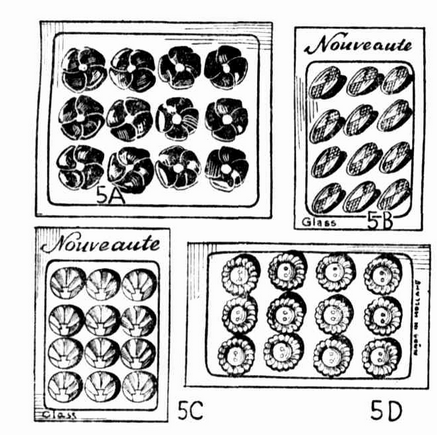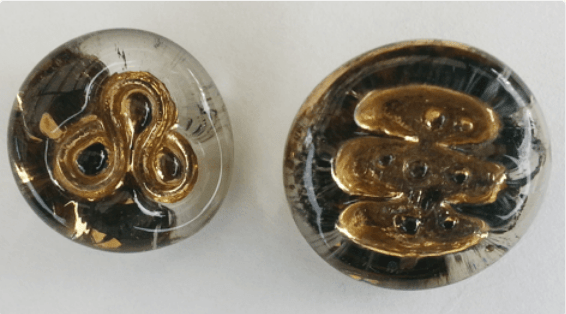Glass Buttons
Glass inserts for metal buttons were made from the 1760s in the area now known as the Czech Republic. Later the ability to add metal shanks to glass buttons was developed. By the 1820s the trade was well established and by the mid 19th century had spread across Europe. In the 1870s Czech glass buttons were hand painted in large numbers, and were exported in huge quantities, although this was interrupted by the World Wars. After WW2 the ethnic German glass makers were summarily deported from their homes in the new Czech Republic, with a new industry rising phoenix like in Western Germany from these deported craftsmen. German glass buttons were exported in large quantities until competition from cheaper plastic substitutes caused a major decline during the 1960s. In the meantime, the remaining glass button industry under communist control was limited to simple, lower quality items for local consumption only. After the break-up of the Soviet Bloc, international trade resumed with beautiful new buttons from vintage moulds being produced.

The Sun (Sydney), 15th October 1936 page 6.
Glass buttons have been made in clear, coloured and black. They have been blown, moulded and lampworked. They were faceted, etched, pressed, painted, inset, used as imitation jewels and constructed into mosaics. Myriad finishes and construction techniques have been used.
See also http://www.austbuttonhistory.com/its-un-australian/the-wide-world-of-manufacturers/#CZECHOSLAVAKIA
The only commercial Australian glass button maker was Grant Featherston. He hand made glass buttons from 1946-1954. If you know of any other Australian glass button makers, contact me!

For any comments or queries, please use the Contact page.
